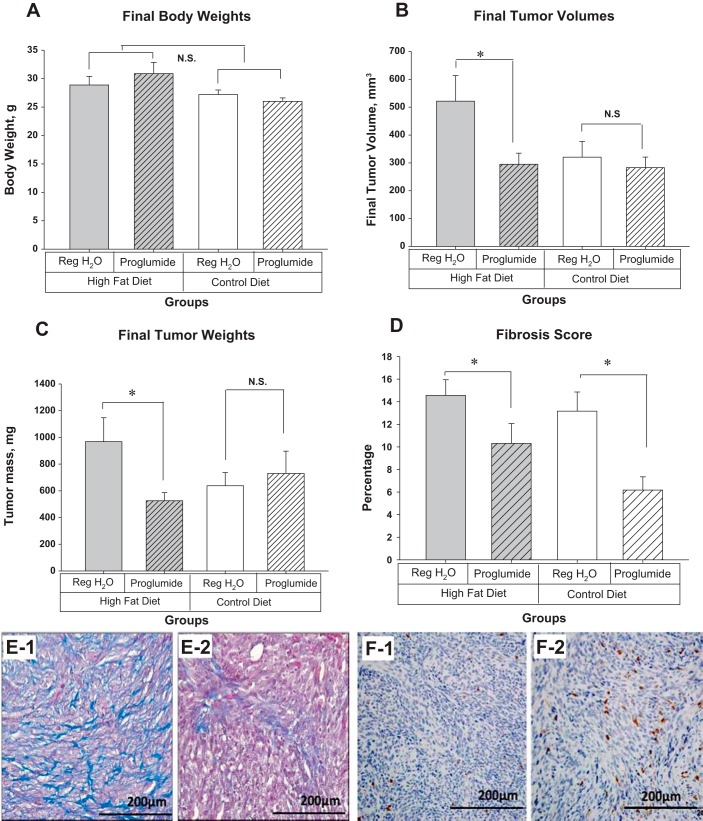Fig. 2.
Receptor antagonist (pharmacological blockade) study with proglumide; Panc02 tumors. A: final animal body weights. There was no statistical difference in body weights between the treatment and diet groups (n = 10 mice per group) at the termination of the experiment on day 42. The mice were all less than 35 g. B: final tumor volumes. Mice on the high-fat diet had tumors that were larger but not significant (P = 0.057) than those on the control diet. CCK-R blockade with proglumide significantly reduced the tumor size of mice on the high-fat diet (*P = 0.038). Proglumide therapy did not change the tumor size in mice receiving the control diet. C: final tumor weights. Mice on the high-fat diet had tumors that were 52% larger than those on the control diet. Proglumide therapy significantly decreased the tumor weight in spite of being on the high-fat diet (*P = 0.032). D: calculated fibrosis score. Fibrosis was significantly reduced in mice treated with proglumide whether on a high-fat diet (*P = 0.03) or in mice receiving the control diet (*P = 0.017). E-1: a representative tumor from an animal on the high-fat diet reacted with Masson’s trichrome stain, showing marked intratumoral fibrosis. E-2: a representative tumor from a mouse also on the high-fat diet but treated with proglumide and reacted with Masson’s trichrome stain revealing the marked decrease in fibrosis. F-1: paucity of intratumoral CD8+ lymphocytes by immunohistochemistry in a mouse on the high-fat diet. F-2: CD8+ immunoreactivity increased in mice receiving proglumide therapy. CCK-R, cholecystokinin receptor; CD, cluster of differentiation; NS, not significant.

